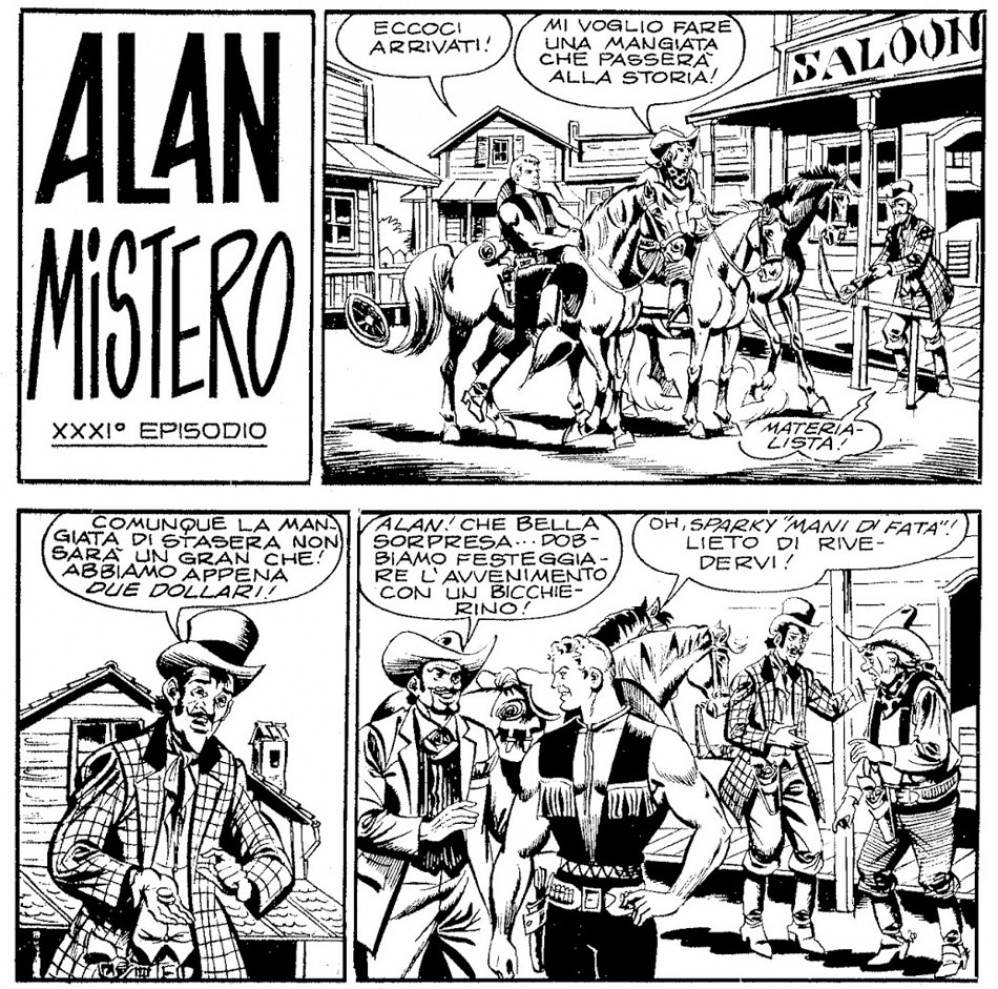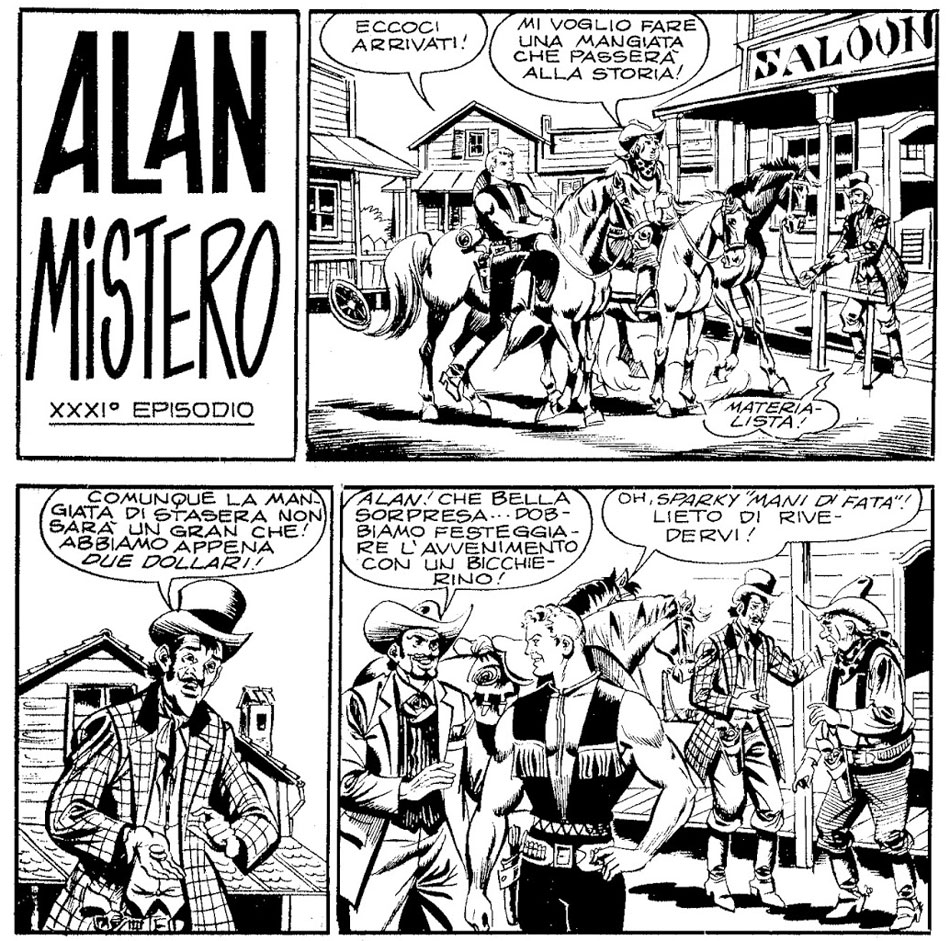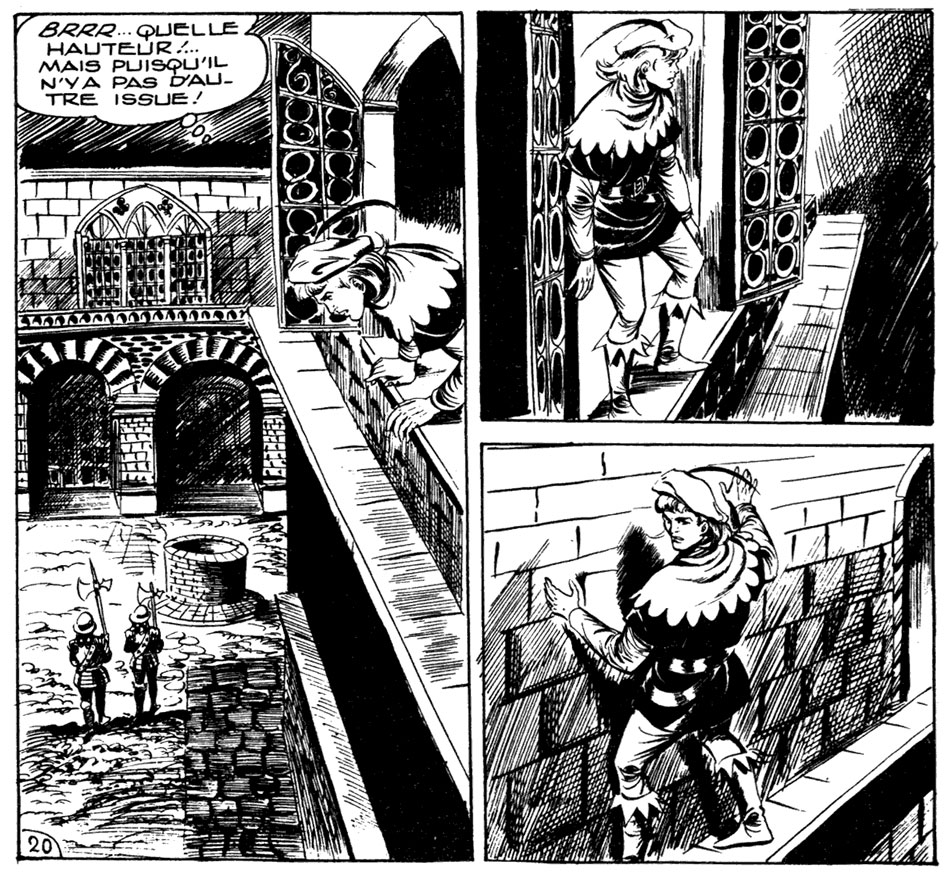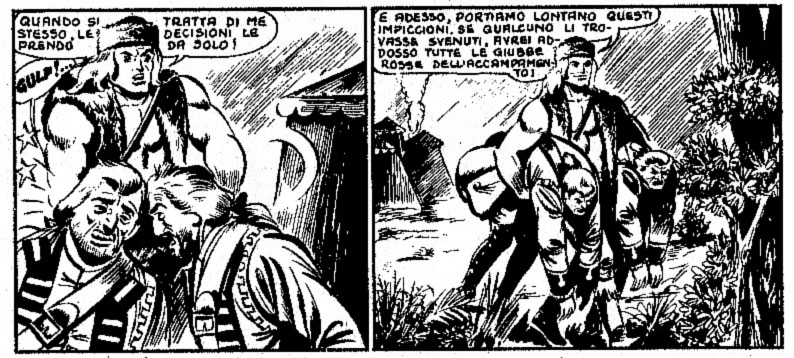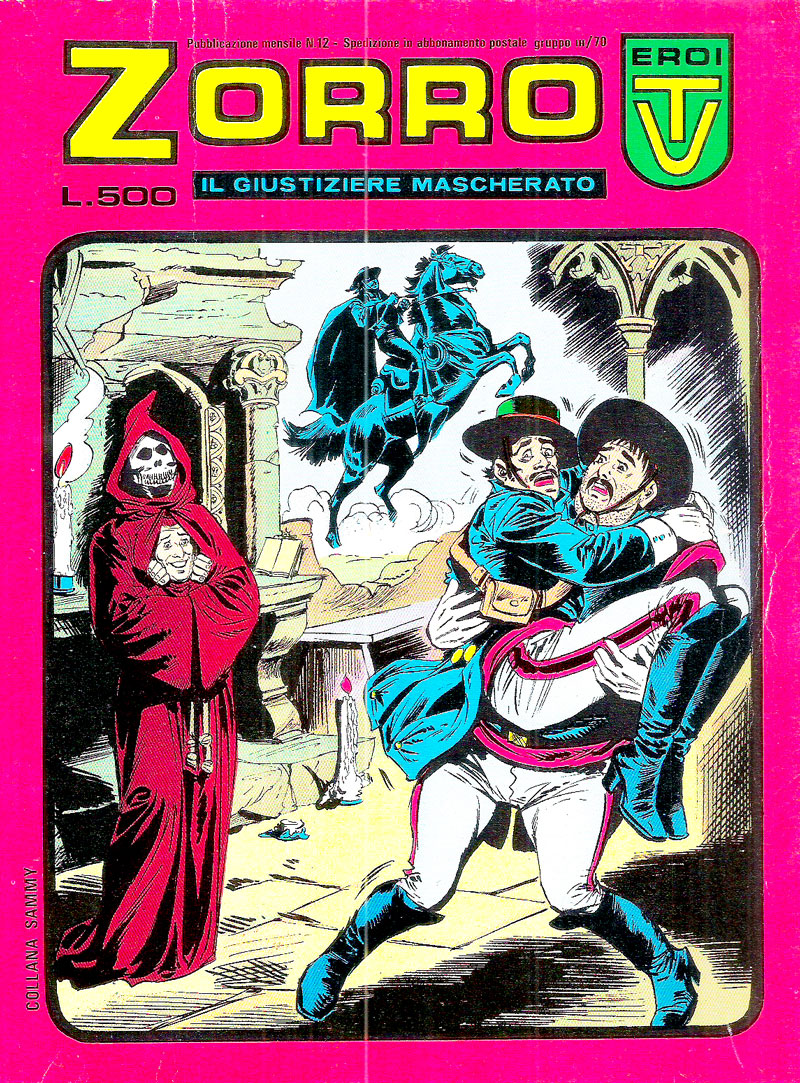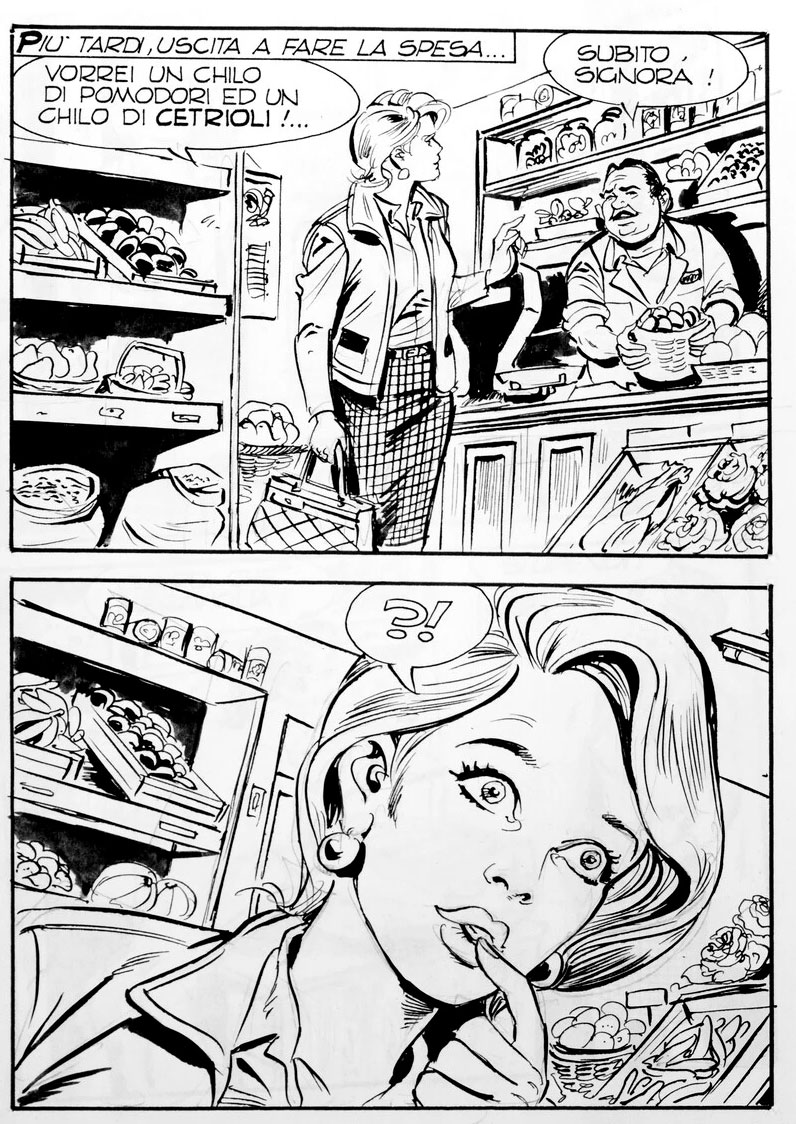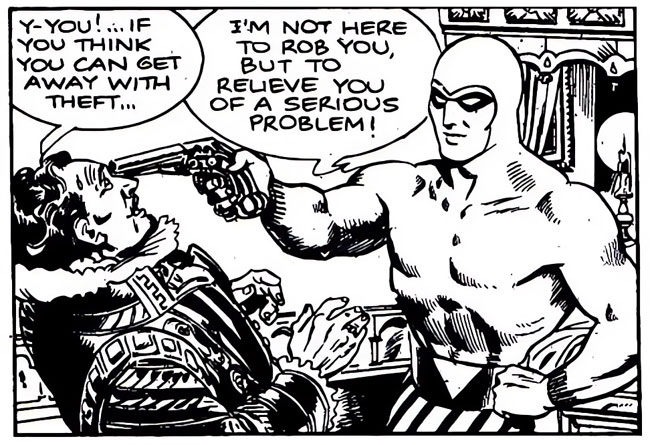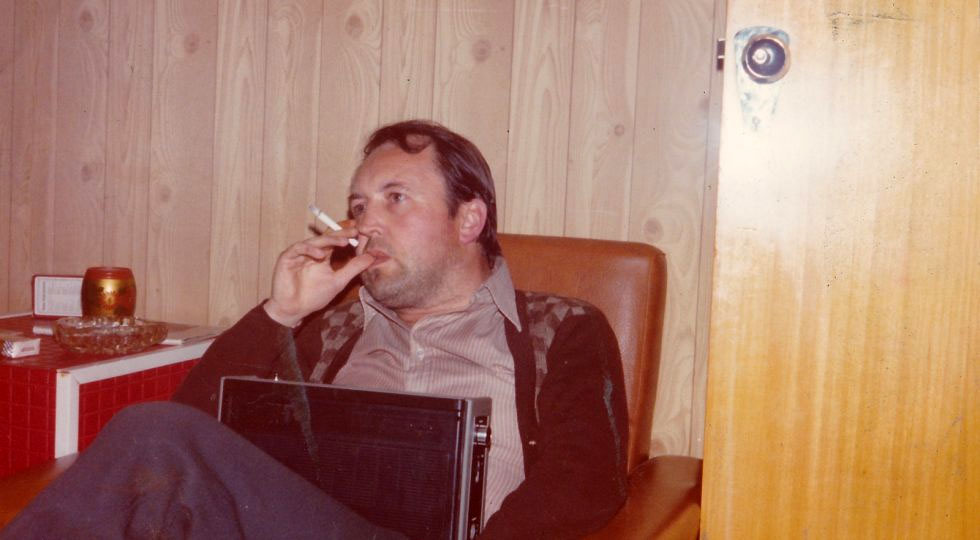Eugenio Benni was a productive Italian comic artist, albeit no household name in his country's comic history. From the 1960s through the 1980s, he spent most of his time affiliated with Nicola Del Principe's studio, working anonymously on countless series for Italian, French and Belgian publishers. Over the years, he worked with many popular characters, including the western heroes 'Captaine Miki' and 'Il Grande Blek', as well as erotic pulp comic books. Between 1992 and 2005, he was one of the artists for the Swedish comic book series 'Fantomen' (based on Lee Falk's 'The Phantom').
Early life and career
Eugenio Antonio Agostino Benni was born in 1939 in Hayange, a French town in the Moselle department in the Lorraine region. He had a French-German father and an Italian mother. At age five, the boy moved to live with his maternal grandparents in the Italian town of Raiano, Abruzzo, where he lived for most of his life. During his childhood, he was an avid reader of the landscape-format adventure comic booklets that were popular at the time, such as 'Tony Boy' (by Leonello Martini and Francesco Pescador), 'Sciuscià' (by Tristano Torelli and Ferdinando Tacconi), 'Il Piccolo Sceriffo' (by Tristano Torelli and Camillo Zuffi) and 'Tex' (by Gian Luigi Bonelli and Aurelio Galleppini). His own artwork showed influences from Leonardo Da Vinci's analytical drawing, as well as Hal Foster's illustration work.
Quentin Durward - 'Le Loup et Le Mouton' (Ombrax #5), artwork presumably by Eugenio Benni.
Studio Del Principe
Having graduated in Painting from the Sulmona Art Institute in 1960, Benni began his career the following year as an artist in the Milanese studio of the famous comic artist Nicola Del Principe (1927-2002), who greatly influenced his style. The collaboration between the two artists proved very productive and lasted until the late 1980s. During his time with the studio, Benni became one of the most versatile artists for Del Principe's comic book production for the publishing house Il Ponte-Bianconi and the French publisher Lug. Drawing thousands of pages, he became an inspiration for the other artists that joined Del Principe, such as Gianni Corsi and Nestore Del Boccio, even though he had already moved back to the region of Abruzzo.
One of the first projects that Benni was assigned to by Del Principe was 'Yuma Kid', an Italian imitation of the American western hero 'Lone Ranger'. For this comic, Benni also came up with the plots, taking inspiration from western movies. During the 1960s, he additionally worked on comics for the French market, mostly for publisher Lug. He drew the humorous mystery feature 'Pat Emoul' (original French title unknown), which was published in Italy by Fratelli Spada in Super Albo Rip Kirbye. He also drew over 1,000 images for a comic adaptation of the Walter Scott novel 'Quentin Durward', published in France in Lug's Ombrax title (1966).
Following the success of the 'Astérix' comic by Albert Uderzo and René Goscinny, Benni also drew the heroic fantasy adventures of the gaul 'Gallix' (1968) in Zembla. However, contrary to Goscinny and Uderzo's series, 'Gallix' offered a more realistic and serious depiction of a brave warrior who fights in Vercingetorix' army against the Roman invaders.
Capitan Miki/Il Grande Blek
When in 1964 the EsseGesse collective ended their collaboration with Edizioni Dardo, the brothers Nicola and Mario Del Principe asked Benni to continue their two popular comic series, the western 'Capitan Miki' and 'Il Grande Blek', about the leader of a group of trappers during the American Revolutionary War. Assisted by Nestore Del Boccio, who was from the same town, Benni drew about thirty episodes of each series, all at a rate of two a week (one Miki and one Blek). These comics were also very popular in France, where Lug ran them in titles like Rodéo and Kiwi. For the French market, Benni and Del Boccio also worked on episodes of a later EsseGesse creation, the muscular marksman 'Alan Mistero', published in France as 'Ombrax'.
Società Iniziative Editoriali/Editrice La Terza
Between 1969 and 1974, Benni worked regularly for the publishing houses Editrice La Terza and the Società Iniziative Editoriali (S.I.E.). At La Terza, he started with drawing the feature 'La Storia Vera del Cane Toby' ("The True Story of Toby the Dog") in the children's magazine La Mia Bambola, and then moved on to contribute risqué cartoons to the adult humor magazine Il Solletico, along with fellow cartoonists Enzo Magni, Onofrio Bramante and others. This experience brought Benni into the field of erotic pocket book comics that flooded the market during the 1970s, most of them written by Nino Cannata. First at Editrice S.I.E. and then at La Terza, he drew over sixty issues of 'Angelica' (1969-1974), a liberal and sexy approach to the princess of Cathay, a character from the 16th-century epic poem 'Orlando Furioso'. Benni was also the artist behind 52 issues of 'Teodora' (1970-1974), a strong-willed and tyrannical woman who uses her powers of seduction to become empress of the East.
Finally at La Terza, Benni also drew about fifteen episodes of 'Alcina la Maga' (1972-1973). A pulpy mix of horror, magic and sex, the books starred a princess with magical powers, who attracts young knights into her palace and, after seducing them, transforms them into animals or plants. The only one spared from this ordeal is Orlando, with whom she falls madly in love whom she enslaves through a magic potion.
Simultaneously with his erotic work, Benni also contributed to S.I.E's adventure comic books, drawing eleven issues of the adventure comic 'Joe Ringo' (1969-1970) and seventeen of 'La Freccia Nera' (1969-1970).
Cover illustration for 'Zorro'.
Sardinian years
Between 1972 and 1978, Benni moved to Sardinia, but continued to collaborate with both Studio Del Principe in Milan and the Bianconi publishing house. His production during this period included the western comic 'Tom Billiby' for Lug's French comic book Zembla, as well as four issues of the 'Robin Hood' comic book by Edinational (1976). Inspired by the Disney television series, and particularly Alex Toth's art from the American comic book version, Benni also drew adventures of the masked vigilante Zorro for Bianconi's 'Zorro Story' comic (1976).
Amori Scandalosi #10 - 'Il Marchettaro' (1985).
In the late 1970s, the market for traditional comics entered a period of crisis, and Benni joined several of his colleagues in drawing for the pulpy comic books of Edifumetto-Squalo, full of cheesy sex humor. Among the monthly titles he contributed to were Il Tromba (1975-1986), Il Camionista (1981-1988), Il Centravanti (1982-1984) and and 'Amori Scandalosi' (1984-1986). During the 1980s, Benni also produced comic book art through the Roman studios of Alberto Giolitti and Sergio Rosi, and also worked for the publisher Francesco Coniglio. In 1987, he worked with Nicola Del Principe and Editore Bianconi for a final time, drawing five issues of 'Sfitty' and five of 'Zippo Panino', two teenage humor pocket books tying in with the "Paninaro" designer clothing trend of the 1980s.
Fantomen - 'Marabella' (1997), art by Felmang and Benny.
Fantomen
During the 1990s, Benni's comic book production got a boost when he joined the team of the Roman artist Romano Felmang in drawing stories with Lee Falk's 'The Phantom' for the Swedish market. Felmang's other co-workers at the time were Germano Ferri and Umberto Sammarini (Usam). Between 1992 and 2005, Benni worked on 26 issues of 'Fantomen', published in Sweden by Semic Press, and in Australia by Frew Publications. His work has included fan favorites like 'The Revenge of Dogai Singh' (1994), 'The Triads' (1995), 'The Suicide Mission' (1996) and 'Lily Palmer's Secret' (1998). In the international credits, he was usually listed as "Anthony Benny".
Death and legacy
Eugenio Benni died in Chieti, Abruzzo, on 2 May 2009. He was 70 years old. On the site of Marco Pugacioff, Benni's former co-worker Nestore Del Boccio praised Eugenio Benni's versatility, and particularly his sense of detail and philosophical nature. He stated that what is generally seen as the typical "Del Principe" style, present in many Italian and French comic books, was largely developed by Eugenio Benni. Many of the stories Benni worked on were for many years credited to Nicola Del Principe himself, or to Studio Del Principe, and it wasn't until later when Eugenio Benni's name was picked up by comic historians. Del Boccio also remembered an instance during the early 1960s, when Benni received an offer to work for the Walt Disney Studios in California. Unwilling to leave his grandmother alone, he politely refused and remained in his beloved Abruzzo.
In the town of Raiana, the "Benni-Di Biase Study and Research Center Association" was founded in 2019 with the aim of promoting and researching the life and work of two of the town's prominent artists, and two close friends: the cartoonist Eugenio Benni and the automobile designer Venanzio Di Biase. Since both "have brought prestige to their community with their work", the group has published a biography on Venanzio Di Biase and released a documentary on Benni, titled 'Eugenio Benni, il Disegno di Una Vita' (2021).


